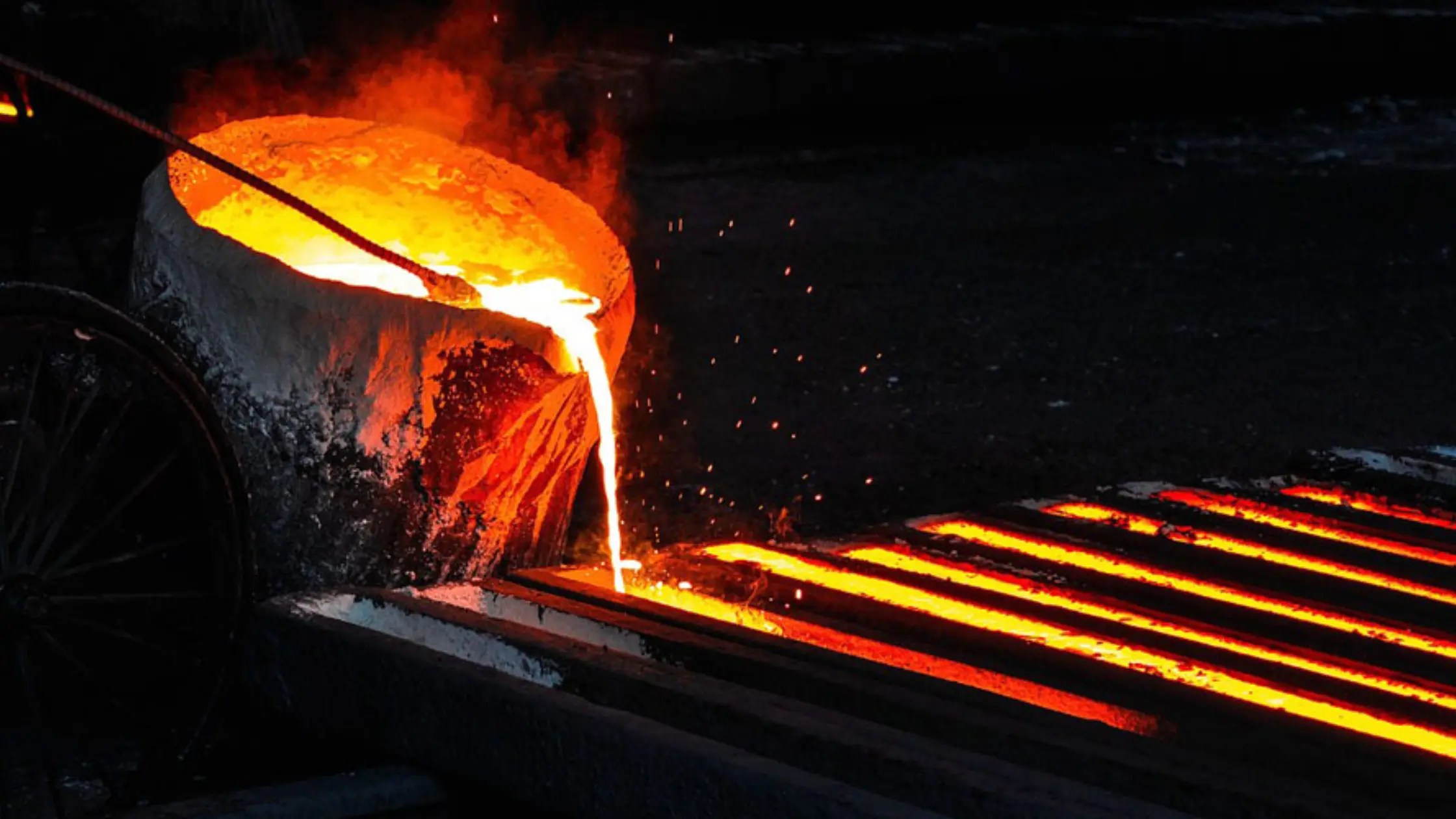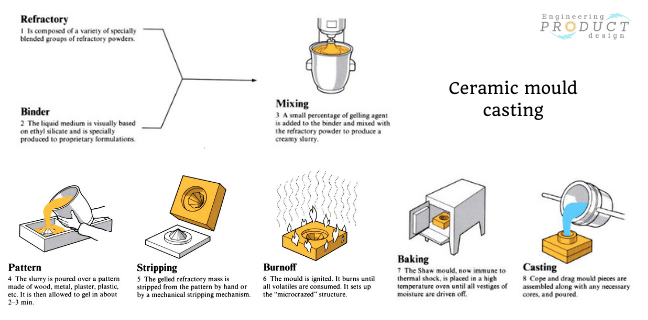Inside the world of Aluminum Foundry: cutting-edge casting solutions
Wiki Article
A Deep Dive Into the Various Sorts Of Metal Casting and Their Utilizes
Metal Casting encompasses numerous methods, each customized for details applications and demands. From the affordable sand spreading approach to the accuracy of investment casting, each process has distinct advantages. Pass away casting stands apart in high-volume manufacturing situations, while lost foam casting presents ingenious layout possibilities. In addition, permanent mold spreading is identified for its sturdiness. Recognizing these approaches opens up a window right into their sensible usages and effects in various markets. What exists under the surface area of these spreading techniques?Sand Spreading: A Flexible and Economical Method
Although different casting methods exist, sand casting stays among one of the most cost-efficient and flexible strategies in the metalworking market. This method employs a blend of sand and a binding representative to develop molds, enabling the manufacturing of parts in varied shapes and sizes. Sand casting is particularly advantageous for little to medium production runs, as it needs very little upfront financial investment in tooling contrasted to other spreading methods.The process starts with the creation of a mold and mildew, where molten metal is poured in to create the wanted object once cooled down. Its flexibility enables the use of various steels, including steel, aluminum, and iron. On top of that, sand casting can fit complex geometries, making it ideal for a series of applications, from automotive components to intricate artistic pieces. In general, sand casting's efficiency and adaptability solidify its importance in the manufacturing landscape.
Investment Spreading: Accuracy and Detail for Complicated Forms
Investment casting stands out as a method renowned for its capacity to produce extremely described and elaborate components. This procedure includes producing a wax pattern that is covered with a ceramic shell, which is then heated up to get rid of the wax and set the covering. The result is an accurate mold that can catch complicated geometrical forms with amazing accuracy.This casting method is specifically valuable for producing parts with slim walls, great features, and limited tolerances, making it excellent for industries such as aerospace, auto, and clinical devices. Financial investment spreading fits a variety of metals, including stainless steel, light weight aluminum, and titanium, enabling manufacturers to fulfill specific product needs.
Furthermore, the procedure reduces machining requirements post-casting, which can enhance efficiency and lower manufacturing prices. In general, investment spreading is a favored selection for applications where precision and information are critical.
Die Casting: High-Volume Production With Excellent Surface End Up

Pass away casting is an extremely efficient manufacturing procedure that stands out in creating huge volumes of metal get rid of extraordinary surface area finishes. This technique involves forcing liquified metal into a mold cavity under high pressure, enabling fast production cycles and harmony in the ended up products. Commonly utilized materials include magnesium, aluminum, and zinc, which supply superb mechanical buildings and rust resistance.
Die spreading is particularly helpful for sectors such as auto, electronic great site devices, and consumer products, where precision and top quality are vital. The procedure allows complex styles, lowering the need for additional machining and completing processes. Additionally, the you could try this out smooth surface areas developed via die casting commonly need very little post-processing, resulting in reduced overall manufacturing expenses. As a high-volume manufacturing strategy, pass away casting is excellent for makers seeking effectiveness without endangering on quality, making it a recommended option for numerous applications across numerous fields.
Lost Foam Spreading: Cutting-edge Strategy for Intricate Styles
Lost foam spreading revolutionizes the manufacturing of complex metal components by using an one-of-a-kind process that eliminates the requirement for traditional mold and mildews. Rather of standard mold-making, this technique utilizes a foam pattern that is covered with a refractory material. Once the pattern is established, liquified metal is poured directly into the mold, creating the foam to vaporize and leave behind a precise dental caries for the metal to fill. This ingenious approach enables complex layouts and thorough features that might be testing to attain with other casting techniques.Furthermore, lost foam spreading can reduce waste and power usage, making it an eco-friendly alternative. Industries such as aerospace and vehicle benefit greatly from this method, as it sustains the look what i found creation of light-weight parts with intricate geometries. Generally, lost foam spreading stands out for its capability to provide top notch, customized steel components efficiently.
Permanent Mold And Mildew Spreading: Sturdiness and Consistency in Metal Parts
Irreversible mold spreading is an extremely reliable method for generating resilient and consistent steel components, leveraging reusable molds that are commonly made from steels such as iron or steel. This spreading process involves putting molten metal into these molds, which are preheated to enhance item high quality and decrease flaws. Making use of recyclable molds not just reduces waste yet likewise permits higher production rates, making it economically beneficial for manufacturers.The resulting components show superb dimensional accuracy and surface area finish, making them ideal for applications in automotive, aerospace, and industrial equipment. Furthermore, irreversible mold casting can accommodate a range of alloys, additionally expanding its versatility. The durability of the actors parts is enhanced due to the regulated cooling prices that promote better grain frameworks. In general, this casting strategy stands out for its capability to create high-quality steel parts that satisfy strenuous efficiency criteria, ensuring integrity sought after settings.
Often Asked Concerns
What Materials Can Be Utilized in Various Metal Casting Processes?

Various materials can be utilized in Metal Casting processes, including aluminum, zinc, iron, and bronze. Each material offers unique residential properties, influencing the spreading method's effectiveness, toughness, and suitability for various applications in production.
How Do Casting Techniques Impact the Mechanical Features of Metals?
Casting techniques substantially affect the mechanical properties of steels, impacting factors like ductility, firmness, and stamina. Variants in cooling rates and mold products can bring about different microstructures, inevitably impacting the performance of the end product.What Are the Ecological Impacts of Steel Casting Processes?
Metal Casting procedures can lead to air and water pollution, source deficiency, and considerable energy usage (Aluminum Castings). In addition, the generation of waste products and greenhouse gas exhausts considerably influences the atmosphere and contributes to environment adjustmentHow Do You Pick the Right Spreading Technique for a Job?
Selecting the ideal casting method entails evaluating task needs, material residential or commercial properties, complexity, and production quantity. Elements like expense effectiveness, finish top quality, and preparation likewise play essential roles in figuring out one of the most suitable technique.What Safety Preventative Measures Should Be Taken During Metal Casting Operations?
During Metal Casting operations, safety and security precautions include wearing protective equipment, guaranteeing proper ventilation, performing devices inspections, keeping a clean office, and having emergency procedures in area to deal with potential risks like burns or hazardous fumes.From the cost-effective sand casting approach to the precision of investment spreading, each procedure has unique advantages. Pass away casting is an extremely effective manufacturing procedure that excels in generating huge volumes of metal parts with remarkable surface finishes. Lost foam casting revolutionizes the production of intricate steel components by using a distinct process that removes the requirement for typical molds (Aluminum Foundry). Irreversible mold spreading is an extremely efficient method for producing consistent and sturdy metal parts, leveraging multiple-use mold and mildews that are generally made from steels such as iron or steel. Different materials can be utilized in Metal Casting processes, including light weight aluminum, zinc, bronze, and iron
Report this wiki page